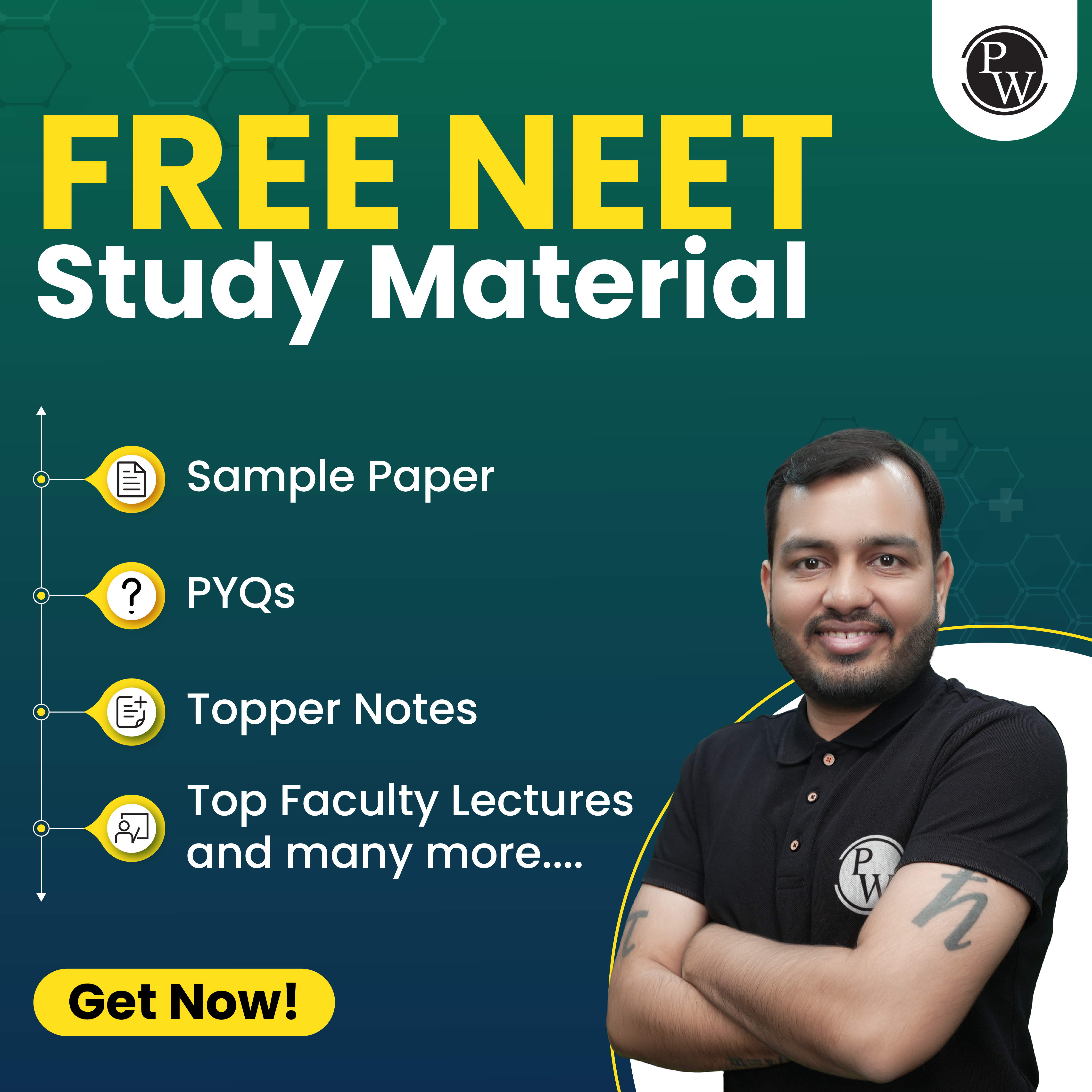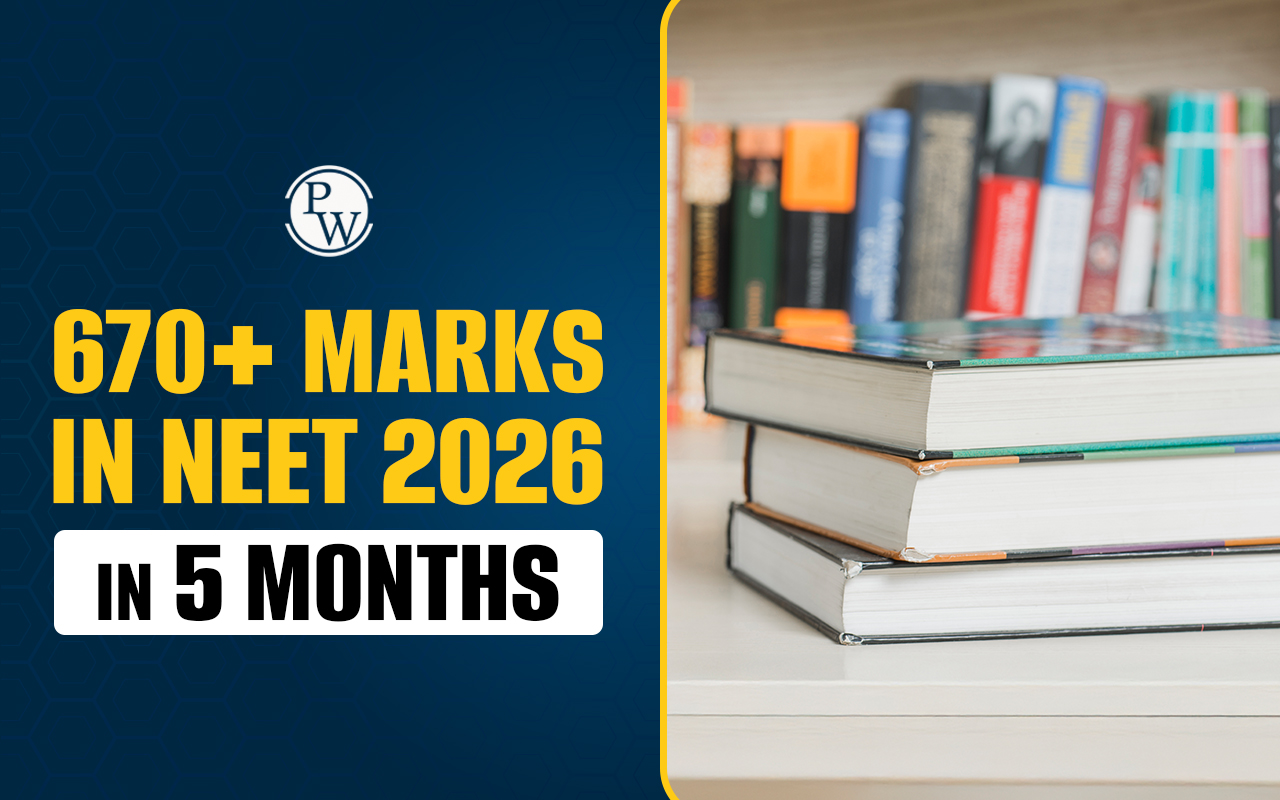
Human Reproduction MCQ : Human reproductive events include the generation of gametes (sperms in males and ovum in females), as well as the transport of sperms into the female.
Insemination occurs through the vaginal canal, and fertilization occurs by the fusing of male and female gametes, resulting in the development of a zygote. This is followed by blastocyst formation and development, as well as attachment to the uterine wall (implantation), embryonic development (gestation), and infant birth (parturition).NEET Study Material, Free Sample Papers, Book, Toppers Notes, PYQs
Human Reproduction MCQ
Human Reproduction is an important topic from the NEET perspective and at least four questions are present in the paper each year according to the previous years' analysis. So, let us discuss some important multiple-choice questions based on Human Reproduction. These questions cover topics like how eggs and sperm are formed, what happens when they meet, and how a baby develops inside the mother's womb. By answering these multiple-choice questions, you show how well you understand the different steps and details of how humans reproduce. It's a way to check your knowledge during NEET preparation about the processes involved in creating new life in a straightforward and organized manner.Human Reproduction MCQ with Solution
Human Reproduction (MCQ) with Solutions is a helpful set of questions and answers about how babies are made. These questions cover basic topics like how eggs and sperm form. The solutions for each question make it easy to learn from your answers. Human Reproduction (MCQ) with Solution is a useful tool for testing and improving your understanding of how humans reproduce from the NEET exam perspective. Human Reproduction MCQ with Solution is designed to be simple, allowing students to review their study level and get the correct answers, making it a practical way to grasp the knowledge about this topic.| NEET Exam Important Links | |
|---|---|
| NEET Syllabus | NEET Biology Notes |
| NEET Eligibility Criteria | NEET Exam Pattern |
| NEET Previous Year Question Papers | NEET Biology Syllabus |
Human Reproduction MCQ For NEET Biology
Here are a few Human Reproduction MCQs for NEET Biology with solutions, that provide insight into the topic and help you to check and test your knowledge. The best thing is their detailed explanation which tells you why the particular answer is right and other options are wrong.Q 1. Which of the following organs serve as the primary reproductive organs in human males and females respectively?
- Testis in males and Ureter in females.
- Urethra in males and Ovary in females.
- Testis in males and Ovary in females.
- None of these.
Answer- Option (3) is correct.
Explanation: The primary reproductive organ of a human male is the testis because it produces and releases the male gametes or sperm. Similarly, in human females, the ovary produces and releases the female gametes or ova. When the two gametes(sperm and egg) fertilize, reproduction proceeds further and a new organism can be produced. The ureter houses the zygote after the fertilization process while the urethra serves as a common outlet for urine and semen in males.
Also Check:
Q 2. Which cells in the testis of a human male produce testosterone?
- Germinal cells
- Interstitial cells
- Sertoli cells
- Both (1) and (3)
Answer- Option (2) is correct.
Explanation: The male androgen hormone testosterone and produces by interstitial cells which are stacked between the seminiferous tubules. The Germical cells are those which take part in the formation of sperm. Sertoli cells on the other hand produce nourishment for the sperm and release certain enzymes which maintain and regulate the differentiation process.
Q 3. Out of the following glands mentioned below, select one which is not a male accessory reproductive gland.
- Bulbourethral gland.
- Prostate gland.
- Seminal Vesicle.
- Urinary Bladder.
Answer- Option (4) is correct.
Explanation: The Urinary bladder does not contribute to the press of reproduction and is used for the storage of urine before it is passed out. The bulbourethral gland releases certain fluids that make the semen thick and lubricates it. The Prostate gland secretes a fluid that makes the semen alkaline while the seminal vesicle contributes to nearly 80% of the sperm fluid which contains fructose for nourishment and several important proteins.
Q 4. What components are present in seminal vesicles that cause thick, yellowish secretion?
- Sugar
- Vitamin C
- Fat
- Both (1) and (2)
Answer- Option (4) is correct.
Explanation: The seminal vesicle releases the seminal fluid which nourishes and maintains the sperm in a healthy condition. The sugar component mainly fructose serves as the energy source for the sperm to swim freely using their tail. Vitamin C ensures that the oxidative stress is low so that the sperm remain active for more time. The presence of these two components makes semen thick and yellowish in color.
Q 5. Which of the following is an accessory component of the female reproduction system?
- Pudendum
- Vulva
- Mammary Gland
- Vaginal
Answer- Option (3) is correct.
Explanation: The Pudendum, Vulva, and Vagina are a part of the external genitalia of the female and are not considered an accessory component. The Mammary glands on the other hand produce milk which provides nutrition to the newborn baby. Since it indirectly contributes to the process of reproduction by ensuring the baby's growth, it is considered an accessory organ.

Q 6. What is the name of the structure composed of ova and their neighboring tissues at different phases of development?
- Ovarian follicles
- Graffian follicles
- Corpus luteum
- Primary follicles
Answer- Option (1) is correct.
Explanation: The ovarian follicle is the general term to describe the ova as it passes through the various development stages. The primary follicle is a particular stage of development when the mother cells have started piding. The Graffian follicle is also a particular phase during which the ova has degenerated. The substance left after the degeneration of the Graffian follicle forms the Corpus Luteum.
Q 7. In females, certain developmental changes occur during pregnancy due to the release of hormones. Which hormone is responsible for the enlargement of breasts during pregnancy?
- Oxytoxin
- Progesterone
- Estrogen
- Both (1) and (2)
Answer- Option (3) is correct.
Explanation: Estrogen promotes the enlargement of breasts which allows for the accommodation of increased milk production post-pregnancy. Oxytocin promotes an increase in milk production and induces labor during the delivery of the baby. Progesterone plays a crucial role in maintaining pregnancy and also controls the menstrual cycle.
Estrogen is more concerned with the development of the female reproductive structures while progesterone is concerned with the management of the system.Q 8. The process of spermatogenesis involves a series of steps that results in the formation of mature sperm. What cells are released after the completion of the multiplication stage?
- Spermatids.
- Primary Spermatocyte.
- Secondary Spermatocyte.
- Spermatogonia.
Answer- Option (1) is correct.
Explanation: Spermatids are formed at the end of the meiotic or multiplication phase of spermatogenesis and are haploid. The spermatogonia are germ cells that haven’t pided yet. They undergo mitotic pision to form primary spermatocytes which then undergo the first stage of the multiplication phase called first meiotic pision to form haploid secondary spermatocytes. At the end of the multiple stages, four haploid spermatids are produced which later mature to form sperms.
Also Check:
Q 9. What is the name of the process that converts spermatids into mature spermatozoa?
- Spermatogenesis.
- Spermiogenesis.
- Spermiation.
- None of these.
Answer- Option (2) is correct.
Explanation: Although spermatids are haploid, they must undergo developmental changes to form mature sperm. This process is called spermiogenesis. Spermatogenesis is the name for the entire process involved in sperm formation. Spermiation is the process of releasing these mature spermatozoa through the reproductive ducts where they combine with fluids released from the accessory reproductive gland to form semen.
Q 10. In human females, during the multiplication phase, the primary oocyte undergoes the first poison to produce which cell(s)?
- Secondary polar body.
- Primary polar body.
- Secondary oocyte.
- both (2) and (3).
Answer- Option (4) is correct.
Explanation: The primary oocyte is formed after the mitotic pision of the female germ cells. These must multiply and undergo meiosis to form haploid gametes. The first meiotic poison results in the formation of one secondary oocyte which matures to form the egg cells and the primary polar body which later degenerates and does not contribute to the fertilization process.
Q 11. When the sperm reaches the ovum, it must first gain entry into the ovum by crossing its protective covering. Which hormone helps in degenerating the outer covering?
- Testosterone.
- Androgen.
- Acrosome.
- Hyaluronidase.
Answer- Option (4) is correct.
Explanation: Testosterone is the male reproductive hormone also called androgen and it has no role in the entry of sperm into the ovum. The head portion of the sperm called the acrosome releases the hyaluronidase enzyme upon encountering the corona radiata layer of the ovum. This enzyme dissolved the hyaluronic acid which binds the protective layer and forms the entry point for the sperm so that its nucleus can fuse with the egg nucleus.
Q 12. Which menstrual cycle phase is classified as a proliferative phase?
- 1-5 days
- 6-14 days
- 15-28 days;
- 14-15 days
Answer- Option (2) is correct.
Explanation: The first 4-5 days of the menstrual cycle is called the menstrual phase during which the endometrium lining is shed. The 6th day marks the beginning of the proliferative phase and continues till the 14th day when the egg is released by the ovary. If the egg is not fertilization by the 14th day, it degenerates to release the corpus luteum giving rise to the degenerative phase.
Q 13. Which cells produce the enzymes that allow embryonic implantation?
- Trophoblast
- Blastomere
- Uterus outer layer
- Blastocyst inner layer
Answer- Option (1) is correct.
Explanation: The trophoblast cells are present in the outer layer of the blastocyst which helps in migration and invasion into the uterine walls allowing for embryonic implantation. Blastomere on the other hand are the cells that undergo pision to form the different germ layers which mature into the fetus. The inner layer of the blastocyst is also called a blastomere.
Q 14. Chorionic villi in human embryonic development interact with the cells of the maternal uterus to generate
- the Placenta
- the Umbilical cord
- the Amniotic cavity
- the Embryonic disc
Answer- Option (1) is correct.
Explanation: The interaction of the chronic villi with the uterine wall results in the formation of the placenta which serves as a medium of nutrients transport to the developing fetus. It also contributes to the exchange of gases and the removal of waste metabolic products released by the developing fetus.
Q 15. Which hormones trigger more frequent and intense uterine contractions during labor?
- Prostaglandins and Oxytocin
- Progesterone and Oestrogen
- Oxytocin and Vasopressin
- Oestrogen and Prostaglandins
Answer- Option (1) is correct.
Explanation: During labor, the walls of the uterus must contract and expand periodically to form a wave-like motion that pushes the baby out of the body. Oxytocin and prostaglandins can stimulate the uterine walls to contract intensely thereby triggering labor and child delivery.
Vasopressin does not contribute to reproduction and is concerned with the reabsorption of water from urine. Progesterone and estrogen are important for maintaining pregnancy but do not contribute to the labor process. NEET exam requires a strategic approach and having a good mentorship will give you an extra advantage during your preparation. Consider joining PW's NEET online coaching where a team of experienced teachers boosts your confidence with detailed video lectures and study material. Enrol Now.Human Reproduction MCQ FAQs
How does humans reproduce?
Is human reproduction important?
What are the 4 stages of fertilization?
How do humans mate and reproduce?










